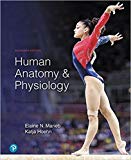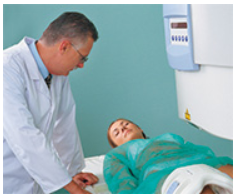
45-Year-Old Female with Dislocated Hip
Kayla Tanner, a 45-year-old mother of four, was involved in a car accident. When emergency responders arrived on the scene and extracted her from the car, they found that her right thigh appeared shorter than her left thigh. They also noticed that even slight hip movement caused considerable pain. Suspecting a hip dislocation, they stabilized and transported her.

In the emergency department, doctors discovered a decreased ability to sense light touch in her right foot, and she was unable to move her toes or ankle. Dislocation of her right hip was confirmed by X ray. Mrs. Tanner was sedated to relax the muscles around the hip, and then doctors placed her in the supine position and performed a closed reduction (“popped” the femur back in place).
4. The sedation that Mrs. Tanner was given relaxed the large gluteal muscles of the buttocks. Name the structures on the femur and the pelvic girdle where these muscles attach.
Want to see the full answer?
Check out a sample textbook solution
Chapter 7 Solutions
Human Anatomy & Physiology Plus Modified Mastering A&P with Pearson eText -- Access Card Package 11th edition
- Every tutor here has got this wrong, don't copy off them.arrow_forwardSuppose that the population from question #1 (data is in table below) is experiencing inbreeding depression (F=.25) (and no longer experiencing natural selection). Calculate the new expected genotype frequencies (f) in this population after one round of inbreeding. Please round to 3 decimal places. Genotype Adh Adh Number of Flies 595 Adh Adh 310 Adhs Adhs 95 Total 1000 fladh Adh- flAdn Adh fAdhs Adharrow_forwardWhich of the following best describes why it is difficult to develop antiviral drugs? Explain why. A. antiviral drugs are very difficult to develop andhave no side effects B. viruses are difficult to target because they usethe host cell’s enzymes and ribosomes tometabolize and replicate C. viruses are too small to be targeted by drugs D. viral infections usually clear up on their ownwith no problemsarrow_forward
- This question has 3 parts (A, B, & C), and is under the subject of Nutrition. Thank you!arrow_forwardThey got this question wrong the 2 previous times I uploaded it here, please make sure it's correvct this time.arrow_forwardThis question has multiple parts (A, B & C), and under the subject of Nutrition. Thank you!arrow_forward
- Calculate the CFU/ml of a urine sample if 138 E. coli colonies were counted on a Nutrient Agar Plate when0.5 mls were plated on the NA plate from a 10-9 dilution tube. You must highlight and express your answerin scientific notatioarrow_forwardDon't copy off the other answer if there is anyarrow_forwardAnswerarrow_forward
- HAND DRAW There should be two proarrow_forwardMolecular Biology Question. Please help solve. Thanks. Please draw how two nucleotide triphosphates are linked together to form a dinucleotide, and label the 5' and 3' ends of the resulting dinucleotide.arrow_forwardWhat is a reversion in molecular biology?arrow_forward
- Surgical Tech For Surgical Tech Pos CareHealth & NutritionISBN:9781337648868Author:AssociationPublisher:Cengage
 Medical Terminology for Health Professions, Spira...Health & NutritionISBN:9781305634350Author:Ann Ehrlich, Carol L. Schroeder, Laura Ehrlich, Katrina A. SchroederPublisher:Cengage Learning
Medical Terminology for Health Professions, Spira...Health & NutritionISBN:9781305634350Author:Ann Ehrlich, Carol L. Schroeder, Laura Ehrlich, Katrina A. SchroederPublisher:Cengage Learning - Essentials of Pharmacology for Health ProfessionsNursingISBN:9781305441620Author:WOODROWPublisher:Cengage





